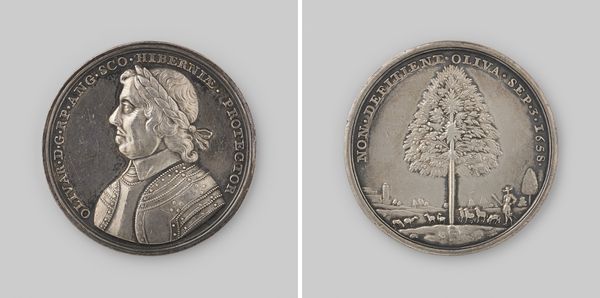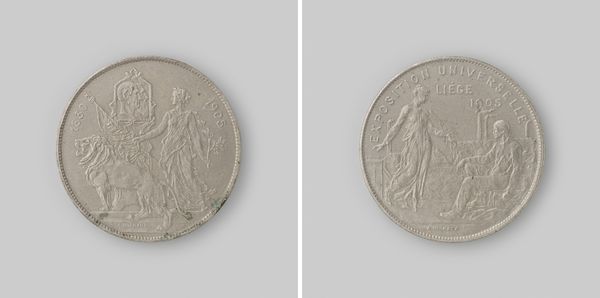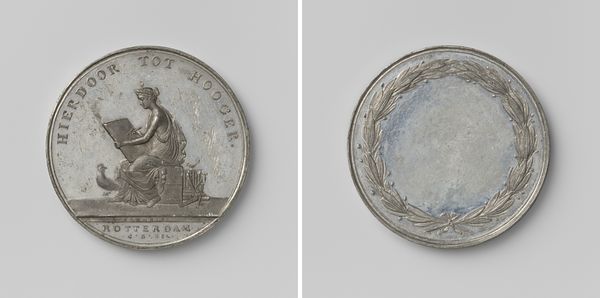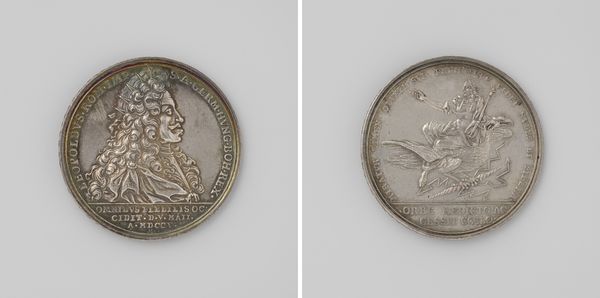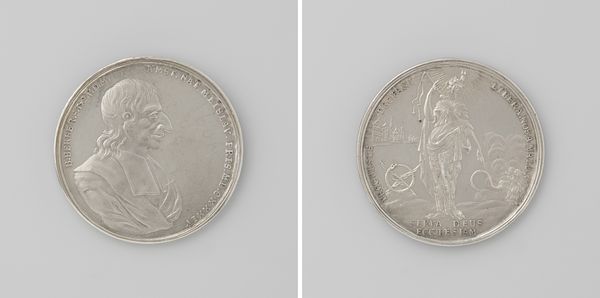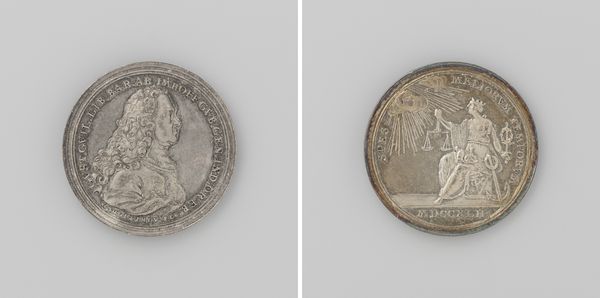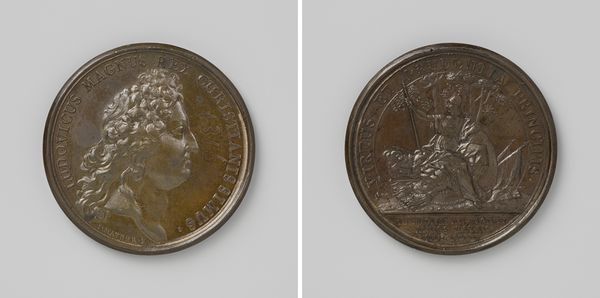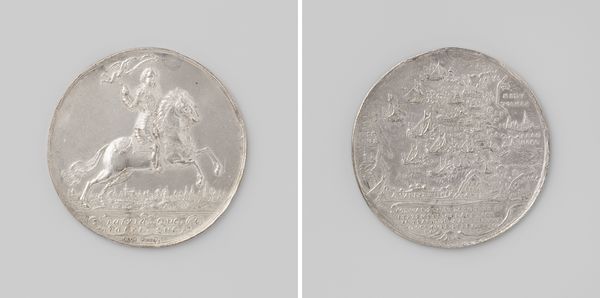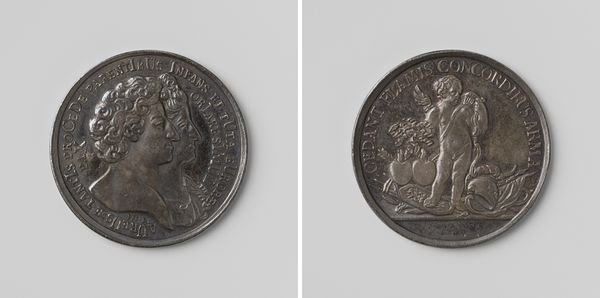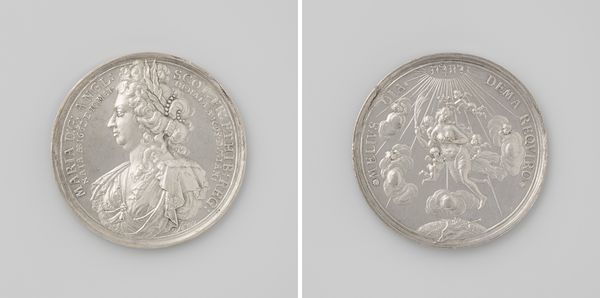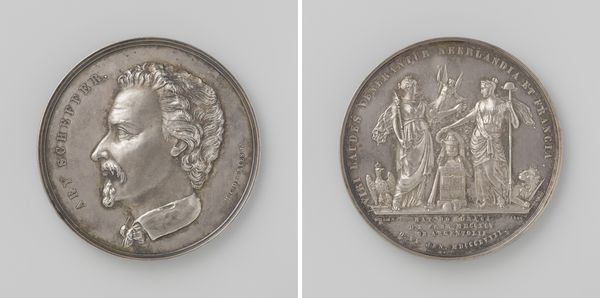
Nicolaas Tulp, vier maal burgemeester en vijftig jaar raad van Amsterdam 1672
0:00
0:00
anonymous
Rijksmuseum
print, metal, sculpture
#
portrait
#
baroque
# print
#
metal
#
sculpture
Dimensions: diameter 4.2 cm, weight 45.52 gr
Copyright: Rijks Museum: Open Domain
Curator: Looking at this small piece, I’m struck by its stillness, almost meditative quality. Like a quiet song etched in metal. Editor: That’s a great way to describe it. This commemorative medal created in 1672 features Nicolaas Tulp, four times burgemeester and fifty years raad of Amsterdam. Curator: Burgemeester four times over! Fifty years! That's quite the tenure, I imagine the weight of all those civic duties must’ve felt immense. Does the tree have something to do with his family's Coat of Arms, perchance? Editor: Exactly. In the 17th century, crafting a medal required multiple specialists, like die cutters, metalworkers, and often someone involved in minting, all crucial in reproducing designs accurately, thereby adding layers of value and status to the final artwork. The piece is of baroque style and done in print, but feels very much like a sculpture, given its bas-relief. Curator: Right. And the choice of metal itself is deliberate; it speaks to wealth and power. Silver has always been associated with significance and value, giving an eternal dimension to his presence. Editor: These kinds of artworks underscore the ways in which commemorative art served as a visual and material tool, reflecting social status through portraits and imbuing the work with prestige by featuring emblems or visual elements. In that sense, it is indeed sculpture, but with an emphasis on its replicability. Curator: What's fascinating is how something so ostensibly formal and stately can evoke a really human feeling of quietness. Even with all the political positioning and power dynamics inherent in the medium, I almost detect humility... though maybe I'm just projecting! Editor: Perhaps! These materials always bring things into question; like what processes of craftsmanship shaped how wealth was circulated and perceived back then? How did someone’s access to precious metals define them? Curator: And in turn, what does our distance to it allow us to reconsider? Maybe it is as simple as pausing. It's a powerful reminder of both the eternal and the fleeting, don't you think? Editor: I think you’re spot on. Considering materiality illuminates so much of our humanity; in that respect, perhaps there is not much separating the burgemeester from ourselves.
Comments
No comments
Be the first to comment and join the conversation on the ultimate creative platform.

